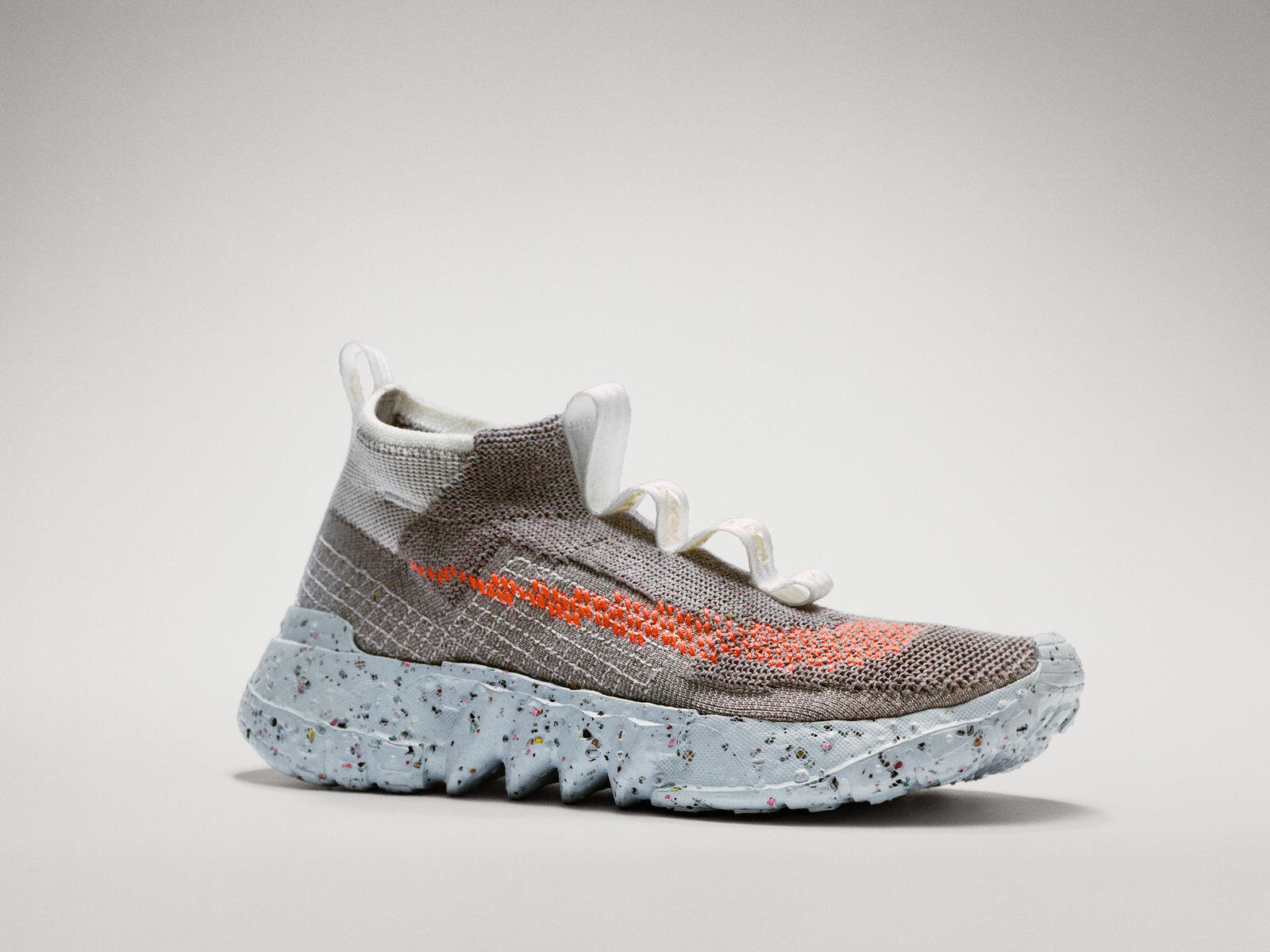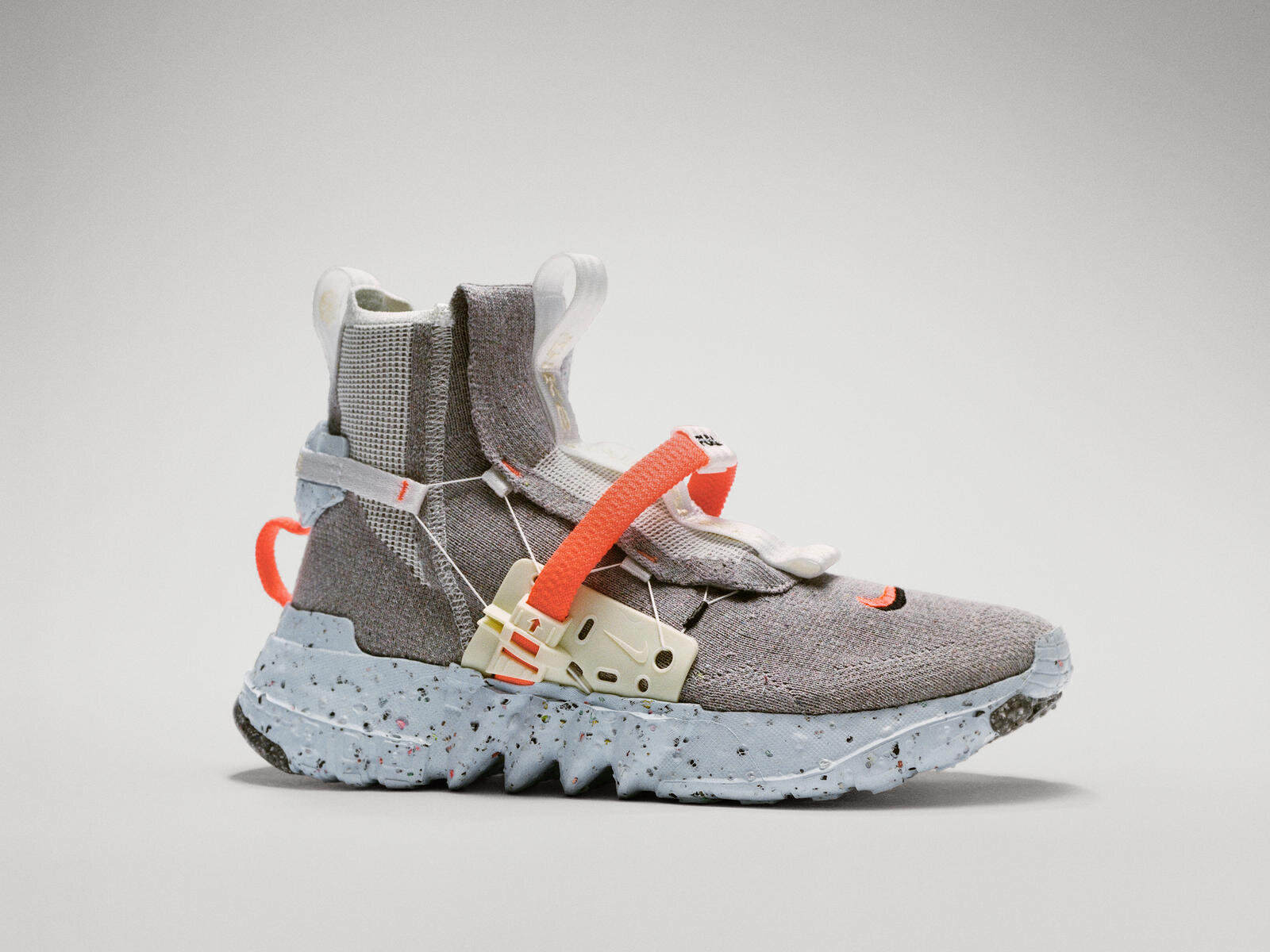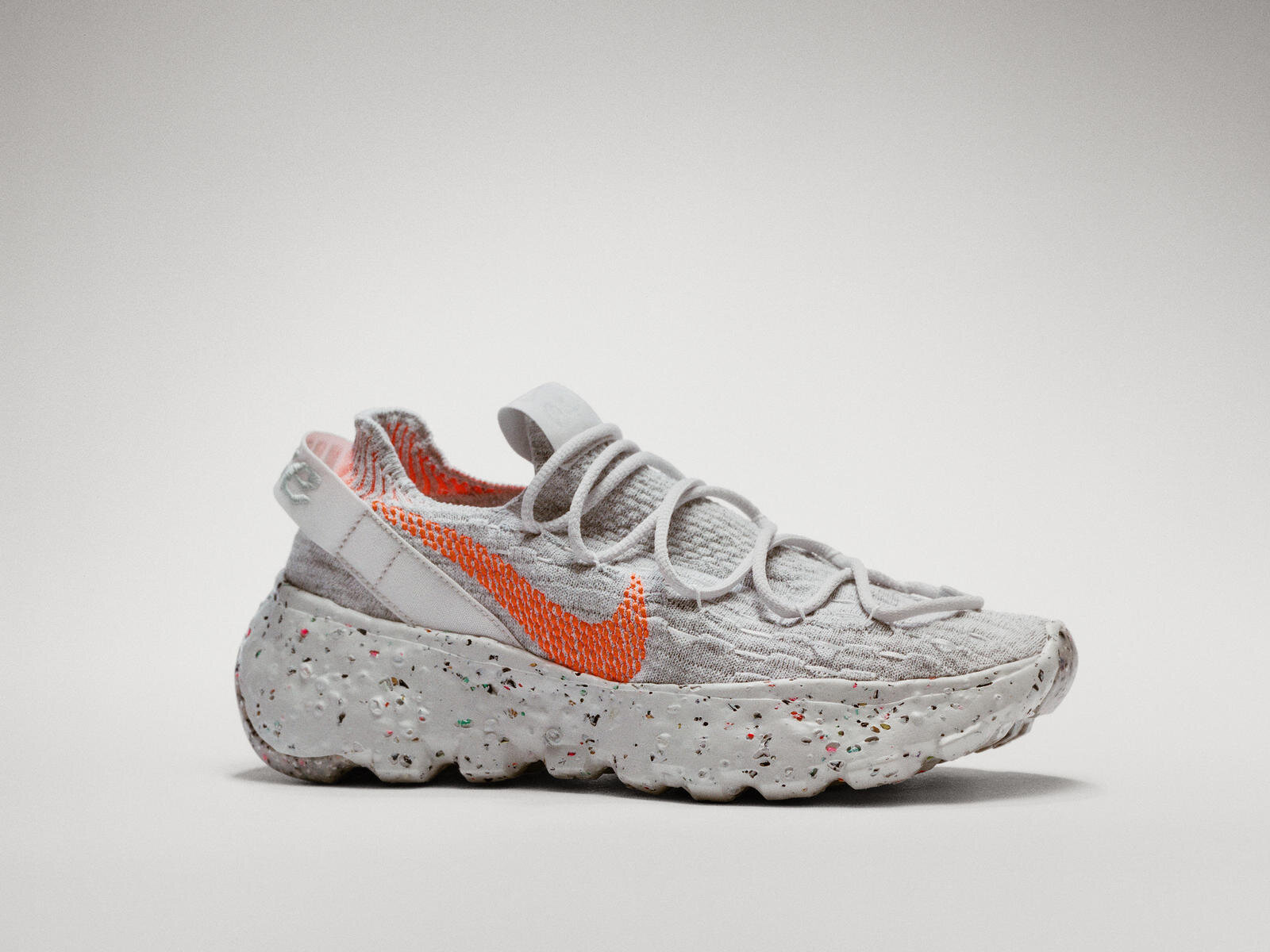Osomtex x Goodwill: Revolutionizing Textile Recycling Together
Patricia Ermecheo
Osomtex x Goodwill partner to boost textile recycling initiatives
Read More123 Street Avenue, City Town, 99999
(123) 555-6789
email@address.com
You can set your address, phone number, email and site description in the settings tab.
Link to read me page with more information.
Osom Brand Journal
Stories, news, press and all articles related to Osom Brand and OSOMTEX while pursuing our mission to keep landfills free of textiles and clothing.
Filtering by Category: partnership
Osomtex x Goodwill partner to boost textile recycling initiatives
Read MoreFormer NASA Astronaut, Engineer
Dr. Karen Nyberg is an engineer, astronaut, and textile artist who, through nearly thirty years of experience in human spaceflight, has gained an appreciation for the value of working within and across diverse political ideologies, cultural values, and world views to advance critical missions.
Karen was selected as a member of the NASA Astronaut Corps in 2000. She made her first trip to space aboard Space Shuttle Discovery in 2008, during the height of International Space Station (ISS) construction, delivering and installing the Japanese Laboratory. On her second spaceflight in 2013, Karen launched on a Russian Soyuz spacecraft and lived and worked at ISS for 166 days. Prior to astronaut selection, Karen worked as an Environmental Control Systems Engineer at the Johnson Space Center where she led several design and analysis initiatives in the areas of space vehicle and space suit thermal and environmental control.
As one of less than 600 people in history who have experienced spaceflight, Karen has firsthand understanding of the “Overview Effect”, a powerful and profound result of seeing Earth from space. This has influenced her life tremendously and inspired her to develop deep empathy and understanding towards people and planet Earth. Having accumulated 180 days in space and seven days underwater in deep-sea training, she fully appreciates where innovation and technology must strive to meet the needs of conservation and sustainability to improve and create balance for all life.
Recently retired from NASA, Karen is currently pursuing interests in the areas of conservation and sustainability and now serves as an ambassador and advisor for Osomtex®️ upcycled yarns and fabrics, promoting a circular economy in the textile industry. She is also pursuing a lifelong passion for drawing, painting, and sewing in the form of textile art.
Karen received her undergraduate degree from the University of North Dakota and graduate degrees from the University of Texas at Austin and has been honored with the highest alumni award from each alma mater.
Watch Karen’s vlog from space here.
Follow Karen on Instagram @astrokarenn
Space Hippie, an exploratory footwear collection constructed with Nike's own “space junk,” transforms scrap material from factory floors into a radical expression of circular design. Every detail of the four initial Space Hippie silhouettes, from material choices to methods of making to packaging, was chosen with consideration for its environmental impact.
With Nike Space Hippie, the urgency of climate change is met by a bold step to reimagine solutions to critical environmental problems. The result is the creation of Nike footwear with our lowest carbon footprint scores ever.
"Space Hippie product presents itself as an artifact from the future. It's avant-garde; it's rebelliously optimistic," says John Hoke, Nike Chief Design Officer. "Space Hippie is also an idea. It is about figuring out how to make the most with the least material, the least energy, and the least carbon."

The product has purpose, but doesn’t veer from Nike’s legacy of goosebump-inducing design. It is a barometer of progress, presenting new ideas to deal with waste and turning trash into something beautiful.
"I'd say Space Hippie attacks the villain of trash," says Hoke. "It's changed the way we look at materials, it's changed the way that we look at the aesthetics of our product. It's changed how we approach putting product together."

"The basis for the engineered knits that form the Space Hippie uppers is created using what we call 'Space Waste Yarn.' These yarns are made from 100 percent recycled material — including recycled plastic water bottles, T-shirts and yarn scraps. Combined with the other elements of the Space Hippie 02, we get an upper that is 90 percent recycled content by weight."

"For cushioning, Space Hippie uses factory scraps from the production of the Vaporfly 4% and reprocesses that ZoomX foam in a way that uses about half the CO2e as typical Nike foams."

"The tooling of all Space Hippie shoes, created with 'Crater Foam,' is made with a blend of standard Nike foams and 15 percent Nike Grind Rubber. The reduction in virgin material gives a lower carbon footprint and the Nike Grind granules create a really unique texture and color mix on every midsole."

Consider Space Hippie an example of advancing human potential. New benchmarks in use of recycled content set a new bar for responsible design. It challenges convention in material sourcing. Space Hippie is about doing better for today, setting the stage for a stronger tomorrow. It drives a new visioConsider Space Hippie an example of advancing human potential. New benchmarks in use of recycled content set a new bar for responsible design. It challenges convention in material sourcing. Space Hippie is about doing better for today, setting the stage for a stronger tomorrow. It drives a new vision for how things are made, used and, ultimately, reused.
"We believe the future for product will be circular," says Seana Hannah, VP, Sustainable Innovation. "We must think about the entire process: how we design it, how we make it, how we use it, how we reuse it and how we cut out waste at every step. These are the fundamentals of a circular mindset that inform best practices."
Space Hippie embodies the idea that designers have a right and responsibility in problem-solving. It tackles a big, complex issue with soft grace. Like a barrier-breaking run, the innovation should provide us all a healthy dose of inspiration.




Courtesy of NIKE
READ MORE at https://news.nike.com/news/space-hippie

May 23, 2019 | Osom Brand Media Center
On current trends, the impact of the fashion industry is potentially catastrophic; with more than 26 billion pounds of textile waste being thrown in landfills each year in the US, the surge of fast fashion and garment usability rates in steep decline, are one of the main culprits. Reformation and Osomtex are working together to put a halt on the lack of circularity. Data shows that less than 1% of material used to produce clothing is recycled into new clothing, representing a loss of more than USD 100 billion worth of materials each year. What happens to the rest? It is actually being dumped into municipal landfills or being incinerated.
According to Reformation's Q1 Sustainability Report, the partnership’s impact so far has seen 12,513 lbs of fabric scraps upcycled. An equivalent to saving 284,796 lbs of CO2 and 1.2 million gallons of water. As both companies look into the future they are excited to continue creating a greater sustainable impact from their partnership.
More information can be found by visiting Reformation’s Q1 Sustainability Report
https://www.thereformation.com/pages/sustainability-report-q1
OSOMTEX is a mission-driven, closed-loop textile waste company founded by Patricia Ermecheo. Since 2011, her pioneering and innovative work on circularity has led to important advances in turning post-consumer textile waste into high-quality upcycled yarns. Reducing the need for virgin materials and diverting millions of pounds of textile waste from landfill through a patent-pending process that uses no water, no dyes and no chemicals. For more information, please visit https://www.osombrand.com/osomtex.
Created in 2009 by founder and CEO Yael Aflalo, Reformation is a revolutionary lifestyle brand that proves fast fashion and sustainability can coexist. A pioneer in sustainable fashion, Reformation infuses green measures into every aspect of the business, from their sustainable factory in Los Angeles, to creating low-impact fabrics, and utilizing repurposed vintage pieces, deadstock fabrics, and eco-friendly packaging. Reformation comes to life through TheReformation.com and their 14 retail locations across the U.S.
A 100% carbon, waste and water neutral company, Reformation educates consumers about the powerful effect we can all have on the environment, like how to be more sustainable with your clothing and highlighting individual impact through RefScale (a tool that tracks the environmental savings of every Reformation purchase a customer makes). Reformation also releases a quarterly Sustainability Report to track their environmental progress and hold them accountable to goals.
Note to editors: Web links, telephone numbers and titles were correct at time of publication, but may have changed. For additional assistance, journalists and analysts may contact Osomtex’s Media team by writing a note at the contact form at http://www.osombrand.com.
Portland, Oregon, 3/26/18 -- Osom Brand joined 1% for the Planet, pledging to donate 1% of annual sales to support nonprofit organizations focused on the environment.

Osom Brand Announces Membership with 1% for the Planet
"Our member companies have donated more than $175 million to our environmental nonprofit partners to date. Currently, only 3% of total philanthropy goes to the environment and, only 3% of that comes from businesses. The planet needs bigger support than this, and our growing network of member businesses is doing its valuable part to increase giving and support on the ground outcomes. Our members lead with purpose and commitment, characteristics that consumers support. We're excited to welcome Osom Brand to our global network," says Kate Williams, CEO of 1% for the Planet.
“1% For The Planet makes it easy for companies and organizations to support what matters most: our communities and our planet. We are very excited to join this amazing network.” says Patricia Ermecheo, CEO & Founder of Osom Brand.”
Members of 1% for the Planet contribute one percent of annual sales directly to any of the approved nonprofit environmental organizations in the network. Nonprofits are approved based on referrals, track record and environmental focus. Thousands of nonprofits worldwide are currently approved.
About 1% for the Planet
1% for the Planet is a global organization that connects dollars and doers to accelerate smart environmental giving. We recognize that the current level of environmental giving - only 3% of total philanthropy - is not enough to solve the most pressing issues facing our planet.
Through our business and individual membership, 1% for the Planet inspires people to support environmental organizations through annual membership and everyday actions. We advise on giving strategies, we certify donations, and we amplify the impact of the network.
Started in 2002 by Yvon Chouinard, founder of Patagonia, and Craig Mathews, founder of Blue Ribbon Flies, our members have given more than $175 million to environmental nonprofits to date. Today, 1% for the Planet is a network of more than 1,200 member businesses, a new and expanding core with hundreds of individual members, and thousands of nonprofit partners in more than 60 countries. Look for our logo and visit www.onepercentfortheplanet.org to learn more.
About Osom Brand
Osom Brand’s mission is to upcycle as much textile waste as possible to keep them away from landfills. As designers and creators, we focus all of our energy on making premium products out of the most magnificent upcycled threads and fabrics ever created. We work with the best technologies available, a low impact method for upcycling-discarded clothing used in the making of Osom Brand goods. We use zero water, zero chemicals and ethical working conditions along the entire production chain. Osom Brand’s affiliation to 1% For The Planet is to step forward to our efforts of giving back. It is our commitment to empower organizations of all trades that are making a difference in the community and environment preservation.

Elephant, Maasai Mara National Reserve, Kenya. Photo:
© Jon McCormack | Conservation International
The socks donated through this partnership will support ‘For Rangers’ – a dedicated group of individuals who are raising money through competing in extreme sporting events for the welfare of rangers who risk their lives daily to protect Africa’s endangered species.

Osom Brand Wildlife Ranger Socks - Conservation International
updated 3/16/18 - Conservation International blog- Human Nature
Editor’s note: As the end of 2017 approaches, Human Nature is revisiting some of our favorite stories of the year

Letter from Keith Roberts to Osom Brand
Despite increases in technology to aid the conservation of elephant and rhino, like drones and tracking chips, the most important part of protecting wildlife is “trusted boots on the ground” –men who are prepared and trained to work long hours monitoring and protecting elephant andrhino. These men operate in tough conditions and cover vast areas on foot each day. In order to do this, they need top-quality clothing that is suited to warm days, cold nights and tough terrain.

An elephant near the Mara North Conservancy in Kenya.
© Jon McCormack | Conservation International
Made from 95% premium recycled yarn, these sustainably-produced zero-waste socks will provide maximum comfort, support and protection to the wildlife rangers in every step on their journey to protect endangered wildlife affected by poaching and ivory trade in sub-Saharan Africa.
About Conservation International Conservation International (CI) has worked in sub-Saharan Africa since 1990 to protect nature.Across the region, CI is engaging African leaders, empowering local communities and helping to evaluate the true value of the region’s natural resources. People need nature to thrive, and nowhere is that more evident than in Africa. The last large source of arable land, minerals and fossil fuels, it is also one of the least-equipped to manage and protect its resources sustainably.

A herd of elephants near the Mara North Conservancy in Kenya.
© Jon McCormack | Conservation International
CI has a focus on Wildlife and People and nothing highlights that more than supporting the rangers on the ground who protect the wildlife -- the human factor in conservation. It is dangerous, tough and thankless work, and if we are to keep rhino and elephant from extinction, there is a huge need to keep our men safe and motivated, both for their welfare and for the welfare of the iconic species they risk their lives to protect. To do this the equipment, training and resources provided to them is paramount, not only to their own safety and their ability to protect wildlife, but also towards the self-worth and loyalty they feel towards the difficult task they are faced with. Their loyalty towards the conservation ideal is crucial.
updated 3/16/18 - Conservation International blog- Human Nature
Read DR. M. SANJAYAN's article